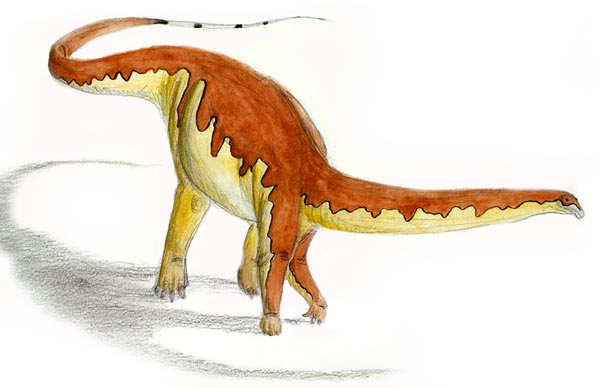
Apatosaurus ajax

Apatasaurus ajax is a very common and well-known sauropod, part of the diplodocoid radiation of North America. It resembles its close relatives, Amargasaurus and Diplodocus, but is bulkier and less specialized. Like Diplodocus, A. ajax, with its long head, high nostrils and eyes, and its peg-like teeth, is a browser (Sylvia J and Stephen A Czerkas). However, compared to Diplodocus, the neck of A. ajax is very flexible, allowing the animal to feed off plant life growing at many different levels. A. ajax is an unspecialized herbivore, capable of eating plants as high as 17 feet above the ground to as low as ground level ( Myhrvold and Currie ).
These 26 meter giants roam across central North America in great, wide-spread herds, stripping new growth off any vegetation within reach and then quickly moving on. Each species of sauropod feeds at a different level, some high, some low, some like A. ajax, in many different places. This method of feeding allows many species of large herbivores to coexist in a habitat without decimating the plant life around them. Even so, sauropod herds are generally loose and spread over a great distance. Only during the migration and mating season do the discrete family groups coalesce into a larger mass. During the mating season, the thunderous booming of the male apatasaurs rolls across the plains as the giant herbivores crack their great tails like whips ( Myhrvold ).
Thanks to Peter Buchholz for helping me with the latin translation of the name, and Ray Stanford, of cource.
Other sites containing pertinent information: